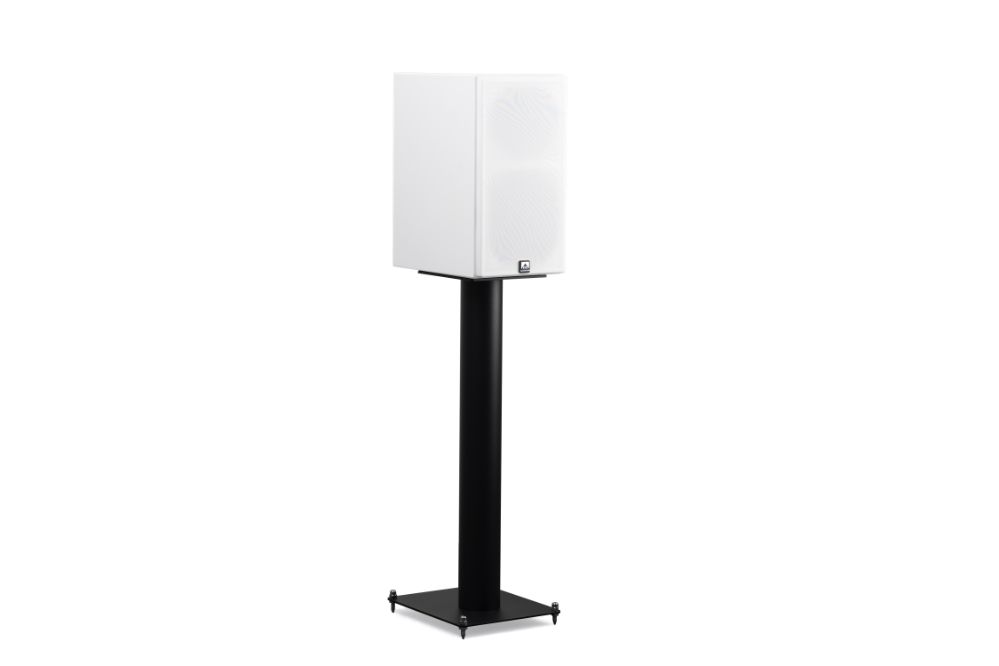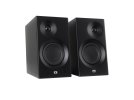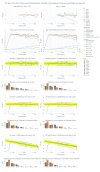Here are some measurements of the XTZ Spirit 4 bookshelf speaker.
XTZ is a Swedish manufacturer that sells their products directly to the customer. The current price of Spirit 4 is ~404 USD / pair (4290 SEK).

Information from the manufacturer:
Dimensions: 190 x 350 x 270 mm (W x H x D) / 7.5 x 13.8 x 10.6"
Weight: 8.1 kg / 17.9 lbs
Frequency response: 42 - 22.000 Hz (+/- 3dB)
Crossover: 2.000 Hz, Midrange / Woofer driver: 12 dB/octave, Tweeter: 18 dB/octave
It has a jumper for tweeter adjustment (-3dB when removed). It was installed during all my testing (0 dB).
My measurements are quasi-anechoic, with near-field port+woofer, combined and corrected for baffle edge diffraction, merged with gated outdoor measurements (1m, 5ms window). I measured this speaker at 5 degree increments both horizontal and vertical.
XTZ provide their own data. Here it is compared to mine. I measured both speakers (left and right) and used the one that gave the smoothest response. The other was ~1dB down >4 kHz, so no big difference, but still.

The only other measurement I could find, was from the Swedish magazine Hifi & Musik:

 hifi-musik.se
hifi-musik.se
Unfortunately, that measurement is of limited use.
It's hard to tell from the blurry image, but they were using CLIO, with a 100 dB (!) range, 300-20000Hz and (probably) 1/6 smoothing. The green, yellow and red lines are 0, 30 and 60 degrees off-axis (horizontal).
The purple line is my on-axis measurement. It lines up well, and the 600 Hz - 1.5 kHz peaking looks very similar, which is important since it doesn't match XTZs own measurements.

Anyway, here's the CTA-2034 data:

A bit uneven at 600 Hz - 1.6 kHz, but not too bad.
Directivity is good.



Horizontal directivity:

0-90 deg for comparison with Stereophile measurements:


Vertical directivity:



Near-field response:

There's a strong port resonance, but it's not causing the uneven woofer response at >600 Hz. It stays the same with the port plugged.
Just to make sure the speaker was ok, I measured the second one as well.
It was brand new, while the other one (1) had been used for ~15 hours including all tests.

Here it is compared with my Revel M16.

Distortion:




The woofer was moving a lot at 90dB/1m, so I didn't measure at higher SPL. There was no audible distortion at all from the woofer though, and no port noise.
Here's the directivity index, compared to Revel M16 measured by Amir:

Finally, I did a quick measurement of M16 to verify that my setup works properly (bass response < 600Hz is from an older measurement). Tweeter axis was off by about 1 inch (mic height adjusted for Spirit 4):

Overall, Spirit 4 is ok. Directivity is good thanks to the waveguide, and the frequency response is ok. Build quality is excellent for the money. There are clear issues with the woofer though.
It sounds good for the money as well. At ~3m distance it's neutral, but the 1.5 kHz dip is audible, making it sound a bit "hollow". Filling it in improves it by quite a bit, and it actually sounds nice.

XTZ is a Swedish manufacturer that sells their products directly to the customer. The current price of Spirit 4 is ~404 USD / pair (4290 SEK).
Information from the manufacturer:
Dimensions: 190 x 350 x 270 mm (W x H x D) / 7.5 x 13.8 x 10.6"
Weight: 8.1 kg / 17.9 lbs
Frequency response: 42 - 22.000 Hz (+/- 3dB)
Crossover: 2.000 Hz, Midrange / Woofer driver: 12 dB/octave, Tweeter: 18 dB/octave
It has a jumper for tweeter adjustment (-3dB when removed). It was installed during all my testing (0 dB).
My measurements are quasi-anechoic, with near-field port+woofer, combined and corrected for baffle edge diffraction, merged with gated outdoor measurements (1m, 5ms window). I measured this speaker at 5 degree increments both horizontal and vertical.
XTZ provide their own data. Here it is compared to mine. I measured both speakers (left and right) and used the one that gave the smoothest response. The other was ~1dB down >4 kHz, so no big difference, but still.
The only other measurement I could find, was from the Swedish magazine Hifi & Musik:

Hifi & Musik testar XTZ Spirit 4 | hifi-musik.se
Hifi & Musiks VM-kval i stativhögtalare runt 5.000 kronor/paret fortsätter med Skandinavien.
Unfortunately, that measurement is of limited use.
It's hard to tell from the blurry image, but they were using CLIO, with a 100 dB (!) range, 300-20000Hz and (probably) 1/6 smoothing. The green, yellow and red lines are 0, 30 and 60 degrees off-axis (horizontal).
The purple line is my on-axis measurement. It lines up well, and the 600 Hz - 1.5 kHz peaking looks very similar, which is important since it doesn't match XTZs own measurements.
Anyway, here's the CTA-2034 data:
A bit uneven at 600 Hz - 1.6 kHz, but not too bad.
Directivity is good.
Horizontal directivity:
0-90 deg for comparison with Stereophile measurements:
Vertical directivity:
Near-field response:
There's a strong port resonance, but it's not causing the uneven woofer response at >600 Hz. It stays the same with the port plugged.
Just to make sure the speaker was ok, I measured the second one as well.
It was brand new, while the other one (1) had been used for ~15 hours including all tests.
Here it is compared with my Revel M16.
Distortion:
The woofer was moving a lot at 90dB/1m, so I didn't measure at higher SPL. There was no audible distortion at all from the woofer though, and no port noise.
Here's the directivity index, compared to Revel M16 measured by Amir:
Finally, I did a quick measurement of M16 to verify that my setup works properly (bass response < 600Hz is from an older measurement). Tweeter axis was off by about 1 inch (mic height adjusted for Spirit 4):
Overall, Spirit 4 is ok. Directivity is good thanks to the waveguide, and the frequency response is ok. Build quality is excellent for the money. There are clear issues with the woofer though.
It sounds good for the money as well. At ~3m distance it's neutral, but the 1.5 kHz dip is audible, making it sound a bit "hollow". Filling it in improves it by quite a bit, and it actually sounds nice.
Attachments
Last edited:



